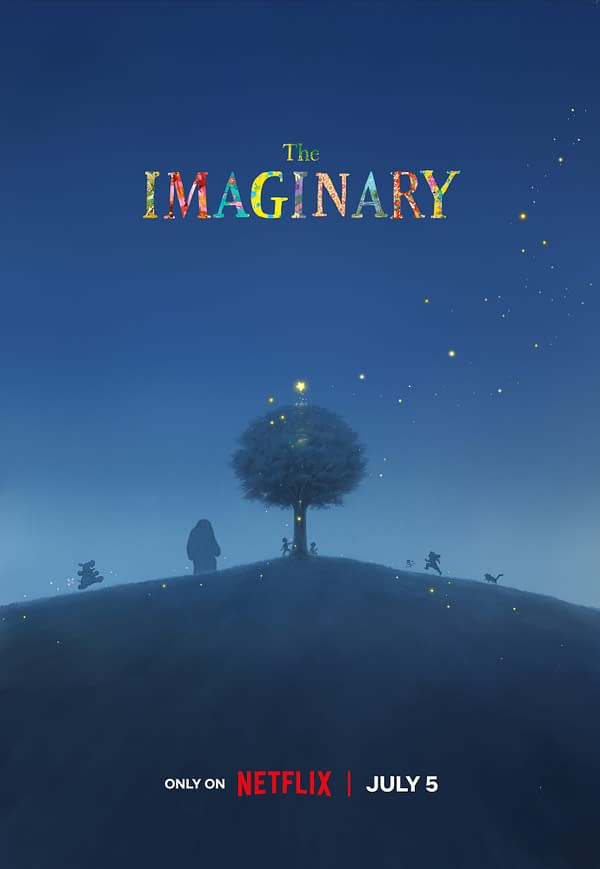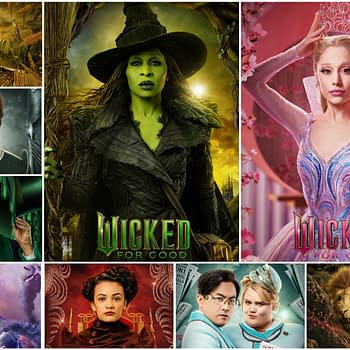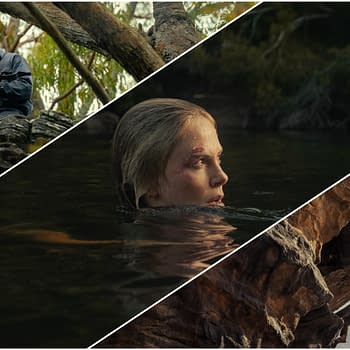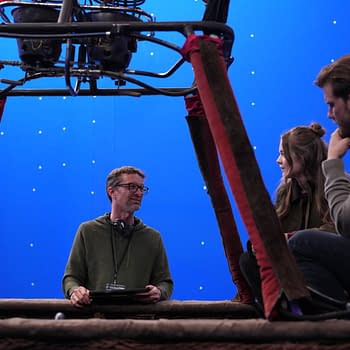Posted in: Kaitlyn Booth, Movies, Netflix, Review | Tagged: studio ghibli, studio ponoc, the imaginary
The Imaginary Review: Doesn't Quite Capture Studio Ghibli's Magic
The Imaginary has all the right pieces of the puzzle but stumbles in some smaller and basic aspects that keep it from achieving greatness.
Article Summary
- Studio Ponoc struggles to match Studio Ghibli's emotional impact with "The Imaginary".
- Studio Ponoc's hand-drawn animation in "The Imaginary" should impress viewers.
- English dub versus original Japanese may be a factor in the film's emotional resonance.
- Despite ambition, "The Imaginary" needs to carve its own path beyond Ghibli.
The Imaginary very much feels like something that has come from the studio that will be the successor to Studio Ghibli's, and while the magic is there, it hasn't reached the very high expectations it is trying to meet.
Director: Yoshiyuki Momose
Summary: Rudger is a boy no one can see, imagined by Amanda to share her thrilling make-believe adventures. When Rudger arrives alone at The Town of Imaginaries, where forgotten Imaginaries live and find work, he faces a mysterious threat.

The Imaginary Has All The Right Pieces To The Puzzle
Certain pressures come from being the successor to something that is universally and critically acclaimed. It might not be fair to anyone involved, but there is no getting around the fact that people will be comparing the new work to the previous one, even if the comparison is unfair or unwarranted. It can be to the detriment of the new art being created, but art isn't released in a vacuum, and there isn't any getting around the context in which it is released. The Imaginary is another film that is coming into the world with some heavy expectations sitting on its shoulders, and it's the second animated film this year to carry that weight.
While Inside Out 2 has to grapple with trying to be as good or better than one of Pixar's best, The Imaginary is trying to find its place among films like The Boy and the Heron, Spirited Away, and more from Studio Ghibli. Even Hayao Miyazaki has a hard time topping Hayao Miyazaki, but when your studio is being pushed as the successor to Studio Ghibli, the comparison will be unavoidable, even if it isn't doing the film any favors. If The Imaginary was released in a vacuum without the weight of Miyazaki and Ghibli hanging over it, some of the parts that are a little rough around the edges might be easier to forgive. That's not what is happening here; the comparisons are unavoidable, and the film feels less polished by comparison, even if the comparison is unfair.

The animation is absolutely stunning, and there is no denying that. This is Studio Ponoc's third film, and they know what they are doing in terms of making hand-drawn animation look seamless yet again. It's not quite a lost art, but it's a novelty we don't see explored that often. Much like claymation, hand-drawn animation feels like it has just a little more love in it than computer-animated films because of the hands-on aspect that comes with making them work. The animation is perfect with the imperfections that come with hand-drawn animation, and it's so good to see that there are still studios out there embracing this style, even if it is more time-consuming. The world of The Imaginary is beautifully well imagined, and everything looks like the world that a small child would think up. Once we see the other Imaginaries, they all look like kid designs with some really deep cuts to historical figures that parents will get a kick out of.
The story is based on a 2014 novel of the same name, and it's looking like we're having a moment with imaginary friends this year since this is the third film released in 2024 dealing with the concept, and all three are approaching it in very different ways. We had Imaginary from Blumhouse, which took the concept from the horror movie angle, and IF, which shares some story similarities to The Imaginary but played everything for comedy and felt like it lacked thematic direction. The Imaginary does not lack in thematic direction or story, and the film knows exactly what it wants to do and how it wants to explore its big ideas. Japanese animation doesn't shy away from concepts that might scare kids a little, so when you see what the villainous Bunting is trying to do to our lovable Rudger or the inciting incident involving Amanda, you'll know this film is not handling anything with kid gloves.
We have mentioned this in previous reviews of kids and family films, but children are not small, dumb adults; they have a very unique way of looking at the world, and the best animation studios are the ones who really know how to tap into that way of thinking. Studio Ghibli is one of those studios; they weren't afraid to give kids a few nightmares along the way. Studio Ponoc is clearly looking to do the same thing with The Imaginary with Bunting and what happens with Amanda; the film trusts its kid audience and the adults to get through the tough parts of this story together, and it all more or less comes together in the end.
Minor Setbacks And Unfair Comparisons
So, if all of the above works, what doesn't? While The Imaginary might have all of the right pieces, the emotional beats don't hit nearly as hard as they should. Spirited Away often leaves people as sobbing messes of human beings by the end, but there is a decent chance you'll get through The Imaginary with nothing more than a lump in your throat. That also might have something to do with the English voice cast. While we watched the English dub for this review, there is a good chance the film might be better if you watch it in the original Japanese, provided you are willing to deal with subtitles. Some aspects that felt a bit clunky could have been moments that were lost in translation.

This is also a very nitpick thing, but in the first half of the film, there were a lot of fade-to-black moments that were timed and felt like planned commercial breaks, like this was a TV movie stitched together for a DVD release. There were fewer of them in the back half of the film, but they were noticeable in the beginning. The movie is not very long, just 105 minutes, but the second half felt like it dragged on a bit too long. The film needed time to set up the world that Rudger was exploring now, but something about the time spent in "the town of Imaginaries" weighed down the entire film and slowed any momentum to a standstill. A movie that is an hour and forty-five minutes shouldn't feel long, but the long moments of exposition as Emily explains what is going on to Rudger are not quite captivating enough to keep you engaged.
The Imaginary has all the right pieces of the puzzle but stumbles in some smaller and basic ways that keep it from achieving greatness. However, the bar it is trying to hit is one that most studios won't ever reach, and that might be the thing that holds Studio Ponoc back. It has become fairly clear now that while Miyzaki might say he is retiring, he isn't, and trying to position yourself as "the next Studio Ghibli" is setting yourself up for failure. Ponoc and everyone involved need to set out and try something other than the off-brand Studio Ghibli, or they will constantly see themselves compared to Ghibli, often unfavorably, because no one can be Miyazaki and Ghibli except for Miyazaki and Ghibli. Let's see what Ponoc, Yoshiaki Nishimura, and everyone involved can do to set themselves apart. They can do it–just use your imagination.














